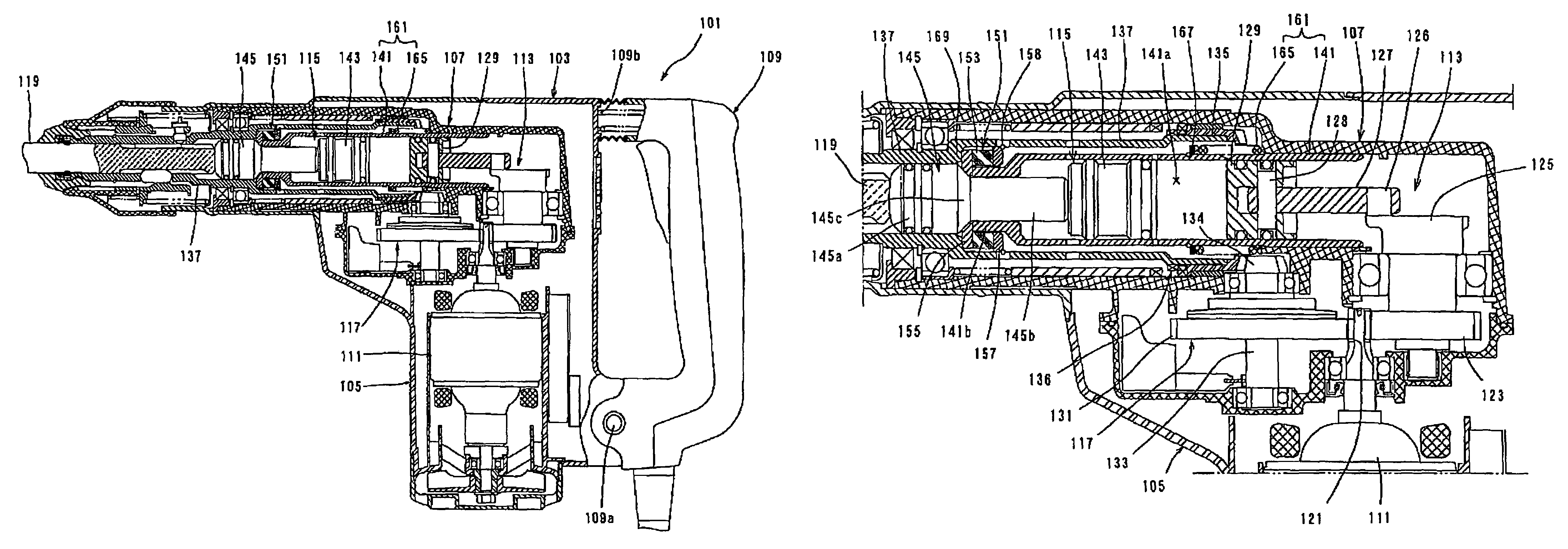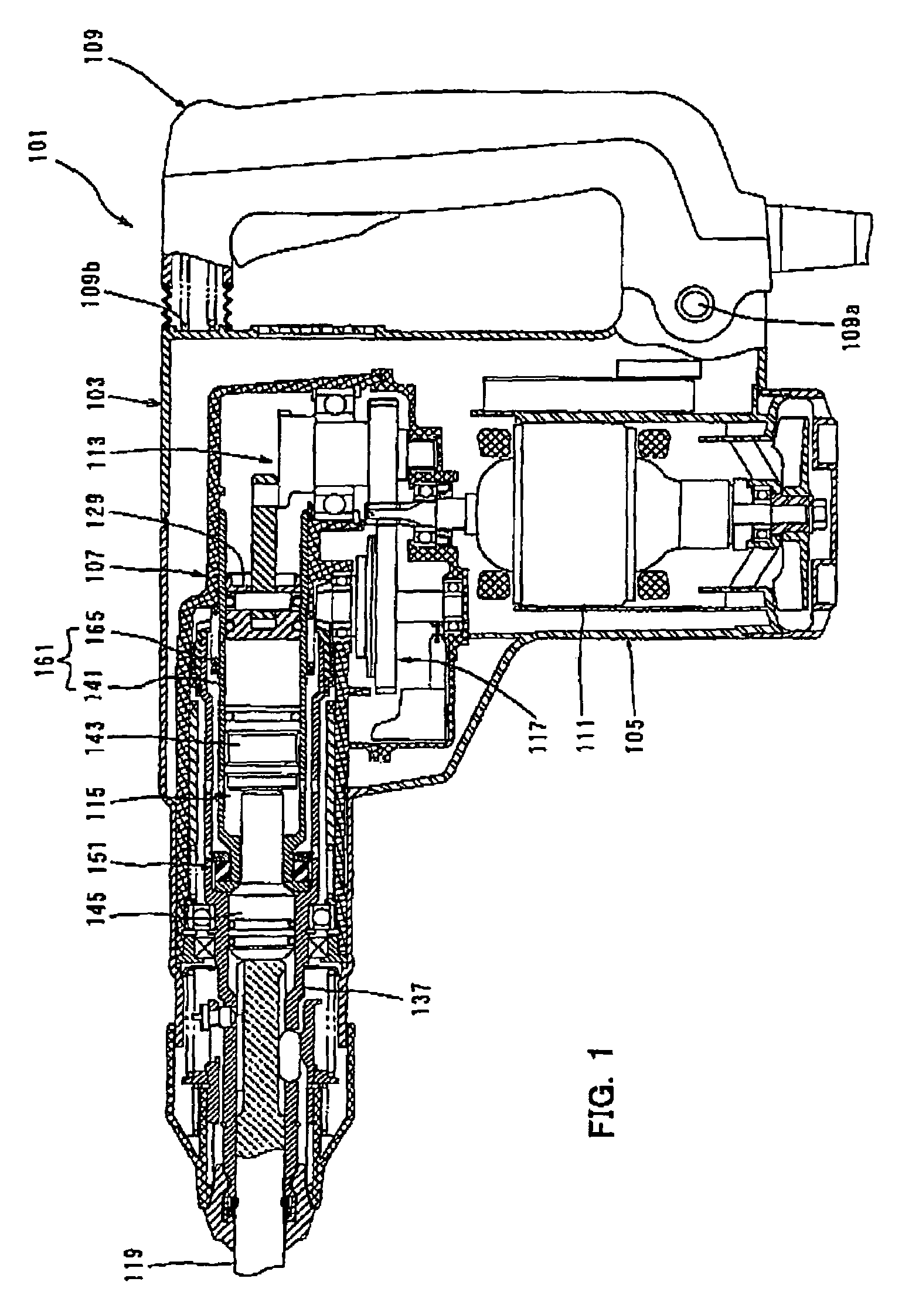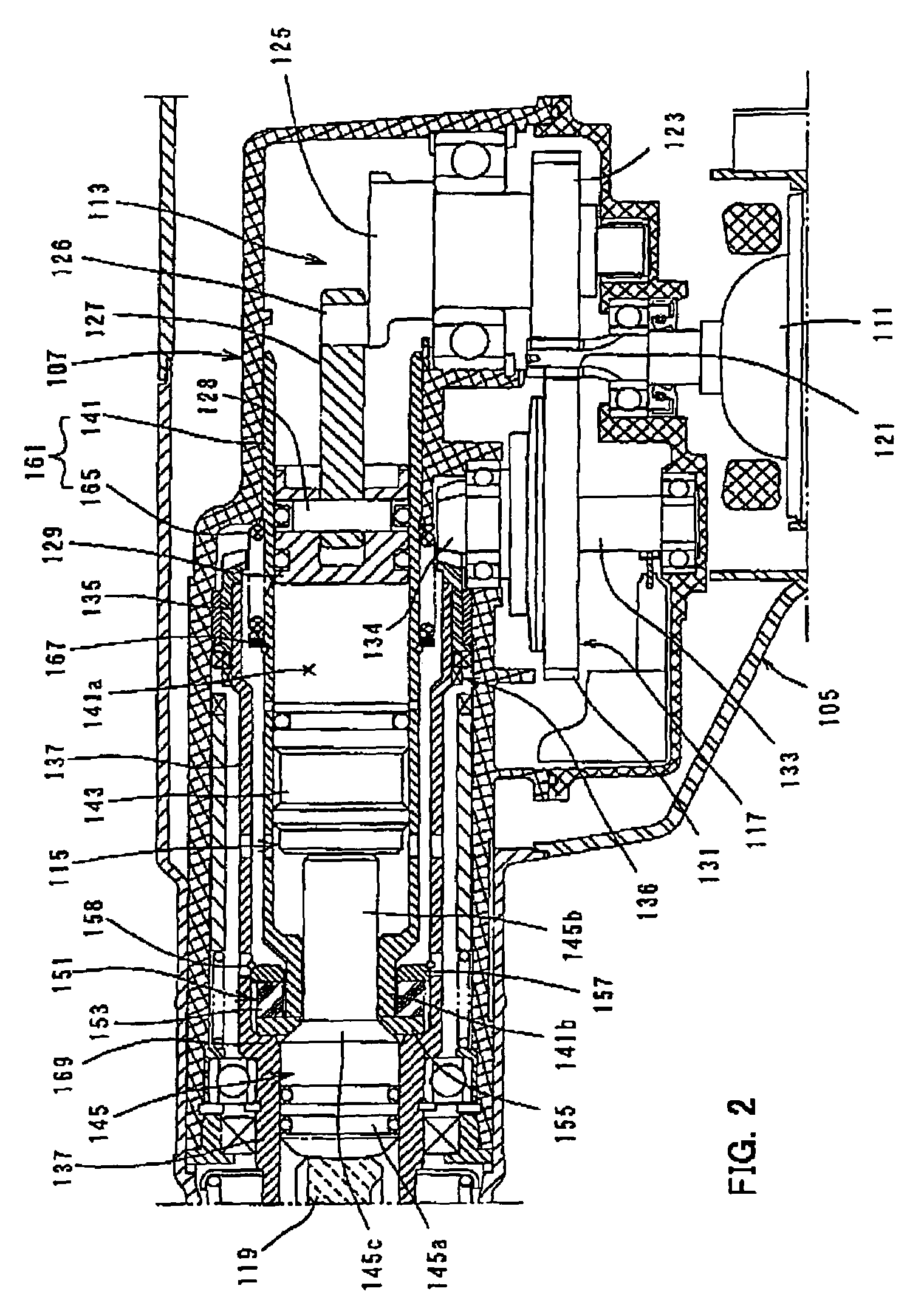Impact power tool
a power tool and rubber ring technology, applied in the field of impact power tools, can solve the problems of difficulty in providing the rubber ring with a hardness that satisfies both functional requirements, and achieves the effect of lessening the impact for
- Summary
- Abstract
- Description
- Claims
- Application Information
AI Technical Summary
Benefits of technology
Problems solved by technology
Method used
Image
Examples
first embodiment
[0030]A first embodiment of the present invention will now be described with reference to FIGS. 1 to 3. FIG. 1 is a sectional side view showing an entire electric hammer drill 101 as a representative embodiment of the impact power tool according to the present invention, under loaded conditions in which a hammer bit is pressed against a workpiece. As shown in FIG. 1, the hammer drill 101 includes a body 103, a hammer bit 119 detachably coupled to the tip end region (on the left side as viewed in FIG. 1) of the body 103 via a tool holder 137, and a handgrip 109 that is held by a user and connected to the rear end region of the body 103 on the side opposite the hammer bit 119. The body 103 is a feature that corresponds to the “tool body” according to the present invention. The hammer bit 119 is held by the hollow tool holder 137 such that it is allowed to reciprocate with respect to the tool holder 137 in its axial direction and prevented from rotating with respect to the tool holder ...
second embodiment
[0050]Now, a second embodiment of the present invention will be described with reference to FIGS. 4 to 6. FIG. 4 shows the hammer drill under loaded conditions in which the hammer bit 119 is pressed against the workpiece. FIG. 5 shows the hammer drill during operation of the impact damper. FIG. 6 is a partially enlarged view of FIG. 4. In this embodiment, the cylinder 141 forming the weight of the impact damper 161 is separated into two parts, i.e. a cylinder body 141c for housing the piston 129 and the striker 143 and the front small-diameter cylindrical portion 141b which contacts the front metal washer 155 of the positioning member 151. In the other points, it has the same construction as the first embodiment. Components or elements in the second embodiment which are substantially identical to those in the first embodiment are given like numerals as in the first embodiment and will not be described or only briefly described.
[0051]The front end portion of the cylinder body 141c is...
third embodiment
[0055]Third embodiment of the present invention will be described with reference to FIGS. 7 to 9. FIG. 7 shows the hammer drill under loaded conditions in which the hammer bit 119 is pressed against the workpiece. FIG. 8 shows the hammer drill during operation of the impact damper. FIG. 9 is a partially enlarged view of FIG. 7. In this embodiment, the impact damper 161 is comprised of existing parts of the hammer drill 101, i.e. the hard metal tool holder 137 and the compression coil spring 165 that biases the tool holder 137 toward the impact bolt 145 (forward). In the other points, it has the same construction as the first embodiment. Components or elements in the third embodiment which are substantially identical to those in the first embodiment are given like numerals as in the first embodiment and will not be described or only briefly described. Further, in this embodiment, the cylinder 141 does not have the front small-diameter cylindrical portion 141b (see FIG. 2) and is fixe...
PUM
| Property | Measurement | Unit |
|---|---|---|
| weight | aaaaa | aaaaa |
| reaction force | aaaaa | aaaaa |
| striking force | aaaaa | aaaaa |
Abstract
Description
Claims
Application Information
 Login to View More
Login to View More - R&D
- Intellectual Property
- Life Sciences
- Materials
- Tech Scout
- Unparalleled Data Quality
- Higher Quality Content
- 60% Fewer Hallucinations
Browse by: Latest US Patents, China's latest patents, Technical Efficacy Thesaurus, Application Domain, Technology Topic, Popular Technical Reports.
© 2025 PatSnap. All rights reserved.Legal|Privacy policy|Modern Slavery Act Transparency Statement|Sitemap|About US| Contact US: help@patsnap.com



